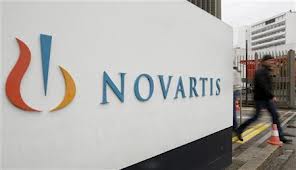 An innovative technology that helps treat lung and heart failure
An innovative technology that helps treat lung and heart failure
By Dr Indira Jaykaumar, Senior Consultant ER & PICU, Apollo Childrens Hospital, Chennai

An 11-year-old girl who suffered from life-threatening pneumonia progressing to Acute Respiratory Distress Syndrome (ARDS) becomes the first pediatric patient in South India to have successfully recovered by the use of artificial heart-lung by-pass machine known as Extracorporeal Membrane Oxygenation (ECMO) at Apollo Childrens Hospital, Chennai
The child was transferred to Apollo Childrens Hospital, due to progressive pneumonia and acute respiratory distress syndrome. Her condition quickly worsened as there was a rapid loss in the functioning of her lung leading to drastic drop of oxygen levels and her liver showed signs of decreased function. Hence, as a final option, the child was put on ECMO. Though ECMO has been used in adult cases in the past, for the first time in South India, the technology has saved a pediatric patient, who was suffering from a life threatening pneumonia to give her a chance to survive and quicker recovery. The child was taken off the ECMO machine after six days of treatment and was discharged in a fully fit condition a few days ago. Apollo Childrens Hospital gave her a gift of life on her 12th birth day (the day she was discharged).
“ECMO is an advanced technology, which ensures that oxygen goes in and carbon dioxide is taken out of the body for patients who have heart or lung failure or both. It delivers oxygen and support to the heart by a modified heart -lung machine in the ICU”

ECMO is an advanced technology, which ensures that oxygen goes in and carbon dioxide is taken out of the body for patients who have heart or lung failure or both. It delivers oxygen and support to the heart by a modified heart – lung machine in the ICU.
ECMO is a temporary life support system that allows time for uation, diagnosis and treatment of the condition that caused heart or lung failure. It performs the work of the lungs and heart and prevents organs and the patient from dying during healing and ECMO supports the patient for days to weeks. The ECMO technology has a proven track record in a variety of conditions especially with respect to children and it requires a dedicated team of medical and paramedical experts with round-the-clock bedside care.
Technically speaking, cardiothoracic surgeons insert a cannula into a major vessel of the body. Blood from the patient drains through a catheter placed in a large vein (usually the neck or groin) into a pump. The pump acts as an artificial heart and pushes the blood through the rest of the ECMO system.Blood is pumped into the oxygenator (which acts as an artificial lung), where it will be cleansed of carbon dioxide and will pick up oxygen. Once the blood leaves the oxygenator; it is warmed and is returned to the patient through a catheter. This oxygenated blood will look bright red in color. Blood is drained out and pumped back to the patient and this cycle goes on and on.
Even though the patient is being supported by ECMO, he/she will remain on the ventilator (breathing machine) but with very low settings. This will allow for removal of secretions from the lungs and will give breaths to help keep the lungs inflated.
There are two types of ECMO therapy: venoarterial (VA) and venovenous (VV) ECMO. The terms VA and VV refer to the blood vessels used during the procedure. VV (venovenous) indicates that the mode of entry into the body is a vein. This is usually the preferred method when the patient has suffered the loss of lung function exclusively. In contrast, VA (venoarterial), means that dual access by a vein and the carotid artery is necessary, and usually applies to patients with both lung and heart impairment.
As with any form of treatment, there are risks associated with this procedure: The blood must be kept from clotting while it goes through the machine, so a drug called heparin (a blood thinner) is given to prevent clotting. Sometimes this can lead to bleeding. The amount of heparin needed is monitored closely and steps taken to minimise any bleeding that occurs. Whenever a catheter is inserted into a blood vessel, there is an increased risk of infection. Although every safety measure is taken, the ECMO circuit can malfunction, fail or small blood clots or air bubbles can get into the blood stream from the circuit. But patients are very closely monitored for all these complications by experienced personnel the perfusionists and critical care specialists.
The patient remains placed on the ECMO machine until his/ her heart and/or lungs resume normal functioning and that will depend on the original diagnosis. The average number of days on ECMO is 5-7, but can be as many as 14 or more days. Each patient is different and the length of the course of ECMO may be affected by these individual differences like the type of lung or heart disease, the amount of damage to the lungs before ECMO , the underlying problem, etc.
Coming off ECMO is done when the heart and/or lungs are better. A trial off will let us know if the lungs are able to work and put oxygen in the blood. The speed of the blood flow through the ECMO pump is decreased, and help from the breathing machine is increased. The ECMO tubing is clamped for short periods of time. The breathing machine then gives more help with breathing. The blood still flows through the ECMO. If the patient does not do well during the trial off, ECMO is continued. A repeat trial off is done later. When the heart and lungs have improved enough, ECMO is stopped.The tubes are taken out of the blood vessels. The place where the tubes were placed is closed with stitches, and a dressing is placed on the site. There may be a small scar, which will fade with time.
The way forward when all conventional therapies to improve lungs or heart function fail.
Be a part of Elets Collaborative Initiatives. Join Us for Upcoming Events and explore business opportunities. Like us on Facebook , connect with us on LinkedIn and follow us on Twitter , Instagram.












